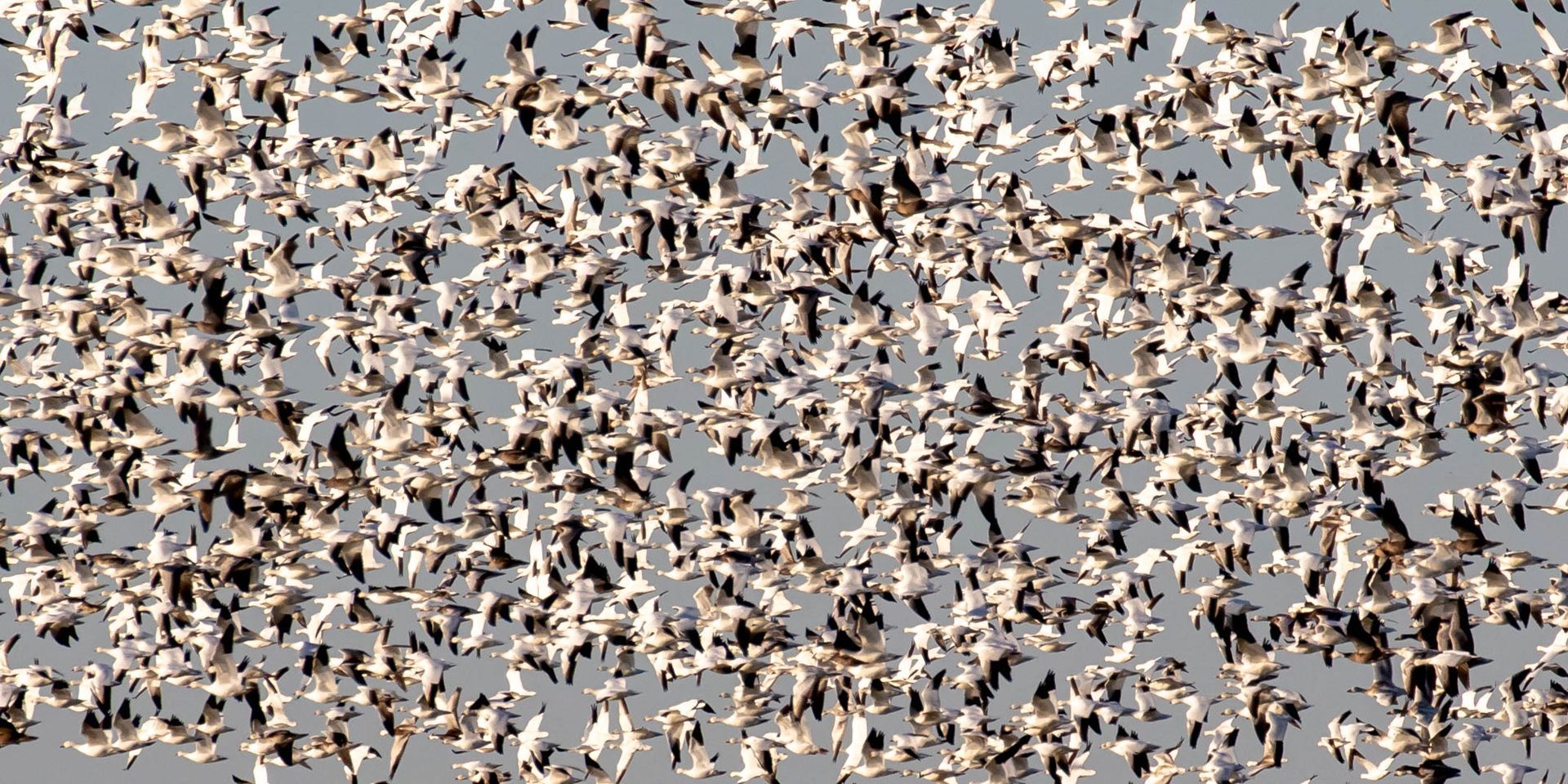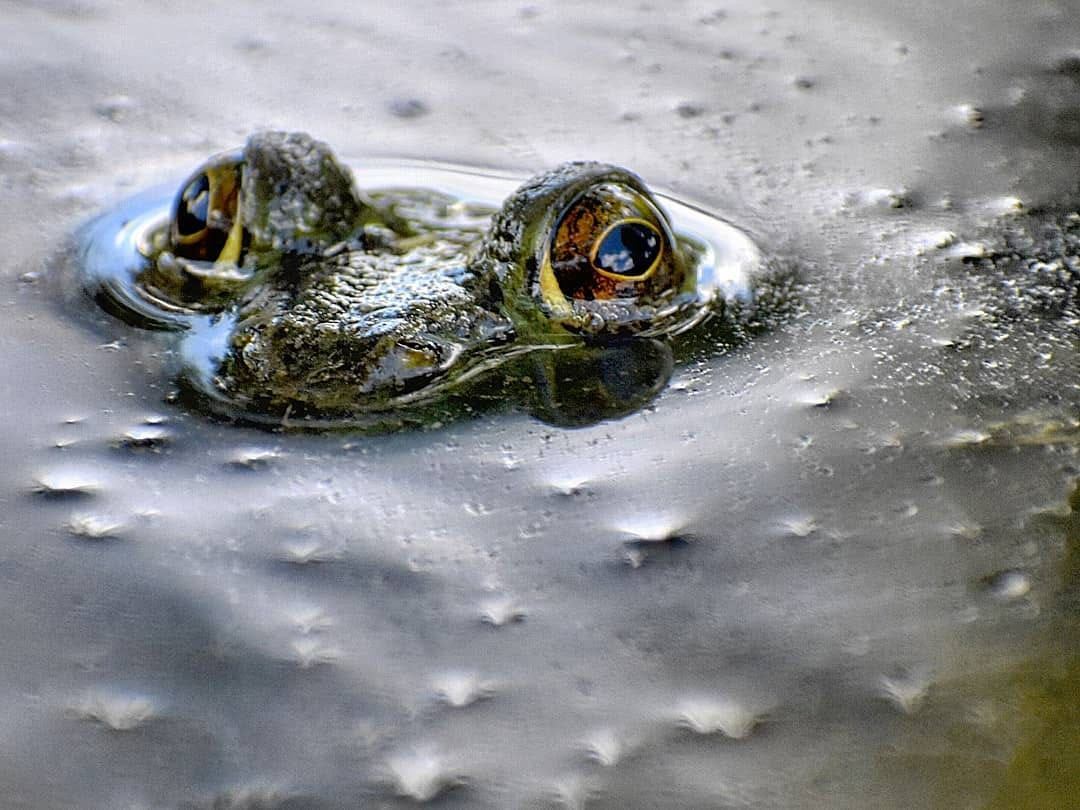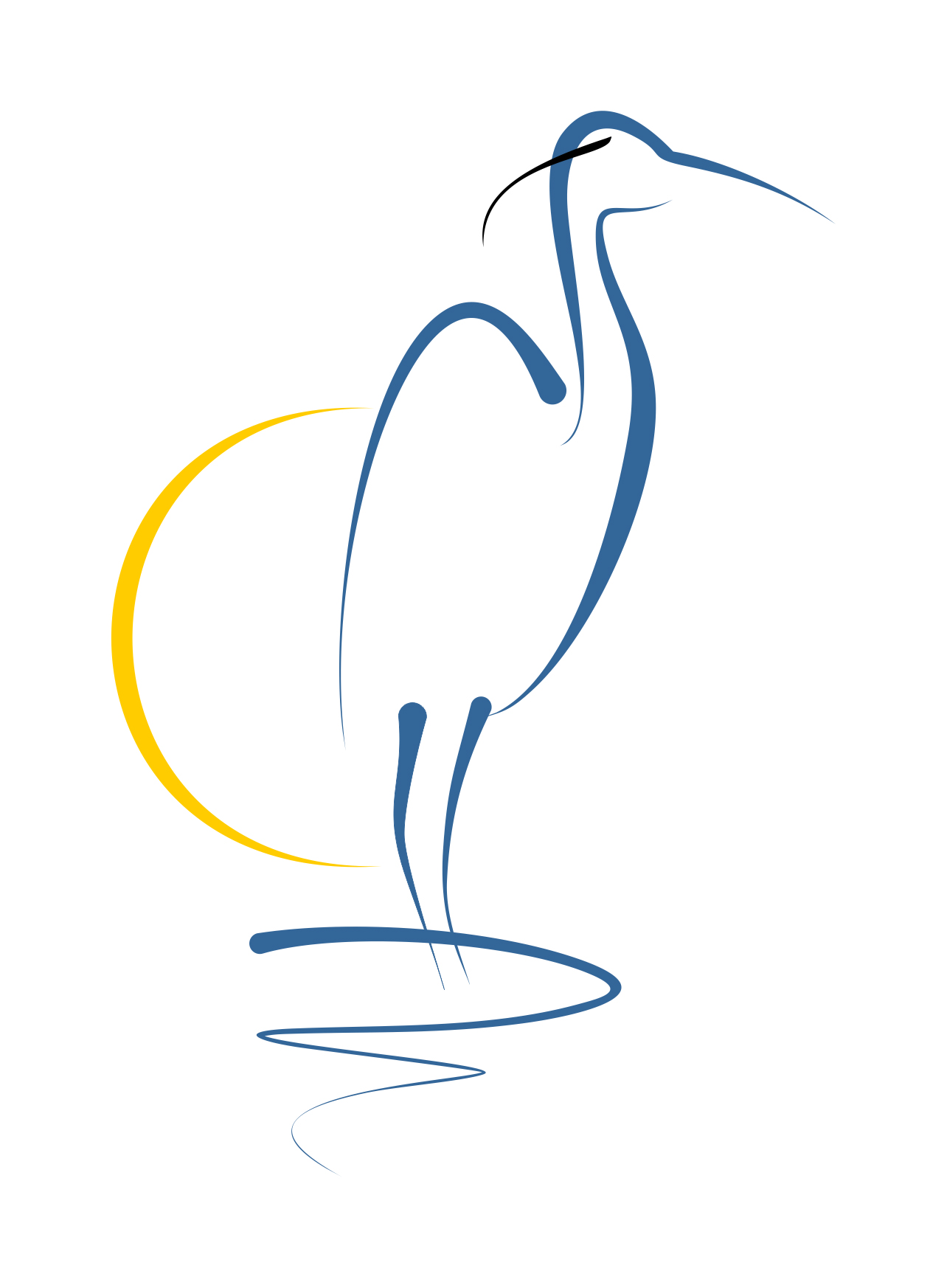The Wonders of Snow Geese By Peyton Briones |
, Photo taken by Laurie Sheppard Kathy Whaley, Refuge Manager, Estimated 6,500 to 7,000 Snow/Ross's Geese on Friday, Dec. 1st, 2023 |
Winter is coming, and with that, the snow geese as well, one of Hagerman’s most awe inspiring displays of sheer numbers of a species in a single location. From their arctic breeding grounds, these birds cover thousands of miles to settle in the fields of Hagerman in the late months to feed on the 300 acre field of wheat before heading back to their breeding grounds, known as the reverse migration. Every August, refuge staff prep the fields along Wildlife Drive with wheat for the snow geese, and |
by early spring, the fields are usually completely barren from the migratory birds. While many see all our white feathered friends as snow geese, many of those birds are known as Ross’ Geese. The main difference in spotting the two is the Ross’ goose is smaller with their bill being shorter and a rounder head. The snow goose has a black liner around the edges of their beak, almost resembling lipstick. Photo by Pam Rendall-Bass The snow goose has two color morphs, or variations, white (snow) or gray-blue (blue), hence the commonly used description as "snows" and "blues". This is actually more commonly found in the snow geese as opposed to the more rare phenomenon found with Ross’ geese. White morphed birds are all white except for their black tipped wings, but blue geese have bluish-gray feathers replacing the white except on the head, neck, and tip of the tail. Spotting a blue morph is not a rare occasion with bigger flocks that come to Hagerman, but if you spot one, they are a beautiful sight to behold. These birds can be seen in astounding numbers in thousands and cover the fields entirely, giving the look that snow has taken over Hagerman. The blue coloration of the snow goose is more common with those that nest in parts of Central Canada. The blue morph on a snow goose is affected by one single gene, with the dark gene being somewhat dominant over the white gene. If a blue morph mates with a white morph, the baby chicks will most likely get the blue morph gene. Despite this, if two blue morph variants were to mate, they will mostly have blue morph chicks, but also may have some white morph chicks as well. | Adopt-A-Nestbox Last Chance! New! Bluebird Nestbox Monitoring Class! Calling All Bird Feeder Watchers! Birding with Jack: The Weekly Bird Census Sponsor the Friends With a Membership Junior and Advanced Ranger Programs Tram Tours on the Wildlife Explorer! Gardening, Mowing and Work Crew Visitor Center Volunteers Needed! Subscribe to Our Monthly Featherless Flyer Blue Phase Ross's Goose by Mike Petrick |
With our bird watchers taking to the fields weekly, it is reported there are around 3,500 snow geese and Ross’ geese currently around the refuge, so be on the lookout next time you visit, they’ll be a hard bunch to miss. There is a reason people are noticing more snow geese over the recent years. The population has rapidly grown over the last few decades, up 300% from 1970. Recent estimates of counts are near one million greater snow geese and ten million lesser snow geese. Changes in winter habitat and migration patterns, including the Central Flyway used to get to Hagerman, are believed to have caused rapid growth. More remaining grain in the fields slows migration, allowing more geese to survive. With the jump in numbers comes a jump in agricultural fields taking massive hits, especially in the arctic and sub-arctic breeding grounds. The growing numbers of migrating snow geese means that more wheat fields, and other fields used by snow geese, are getting eaten up quickly, causing damage to other waterfowl and wildlife that use the arctic and sub-arctic grounds as their home habitat. |
Photo by Pam Rendall-Bass | Since the late 1990s, efforts have been underway in both the U.S. and Canada to try and reduce the population of lesser snow geese to more manageable levels due to the elimination of some habitats in Hudson Bay and other areas. The Light Goose Conservation Order was eventually established in 1997 and mandated on a federal level in 1999. These efforts included increasing hunter bag limits, extending the length of hunting seasons, and adding new hunting methods. Although these have been implemented, they have not been successful in reducing the overall population of snow geese. Despite their destructive capabilities, they are still a beautiful sight to see at Hagerman and bring in lots of people ranging from bird |
enthusiasts to visitors hoping to watch the spectacle. A fun fact about the snow goose, they do make epic journeys by air, but they are also quite impressive on foot. Within the first few weeks of hatching, babies may walk up to 50 miles with their parents from the nesting grounds to a more suitable area for the parents to monitor and care for the babies. After hatching, baby snow geese are well developed, having open eyes and down-covered bodies that immediately show the color of feathers they will have as an adult. After a few days, they can maintain a body temperature on their own and grow quite quickly. |
Though it may not be well known, there are two types of snow goose, the lesser snow goose, and the greater. While the only identifying factor noticeable immediately is the greater snow goose having a slightly larger build than its counterpart, the main difference lies in the nesting grounds and migratory paths. The lesser snow geese, the variant seen at Hagerman, breed in northeast Siberia, north Alaska and northwest Canada, then travels to south USA, north Mexico, and even Japan through what are known as the the Central Flyway, Mississippi Flyway, and Pacific Flyway. The greater snow goose, on the other hand, breeds in northeast Canada and northwest Greenland, then travels to northeast USA during the winter through the Arctic Flyway. | Photo by Murali Hanabe |
Refuge Update: Though refuge lands are open from sunrise until sunset every day of the year, the Visitor Center is open Monday through Saturday 9-4, Sunday 1-5. It's a great time to visit the refuge! |
Recent Sightings: |
Immature Bald Eagle by Brenda Edwards | Adult Bald Eagle by Brian Clark |
Juvenile Bald Eagle by Jim Oliver | Snow Goose by Jim Oliver |
More Amazing Nature Photos taken at the refuge. |
Upcoming Activities:
The Friends of Hagerman is Hosting 13 Family Friendly Events in December! |
|
The Adopt-A-Nestbox Sale is On! Hurry! Only a Few Nestboxes Available! The perfect Christmas gift for the bird Lover in your family |
Every year the Friends of Hagerman gives the public an opportunity to support the Eastern Bluebird population and learn all about them via the Adopt-A-Nestbox Program.
Participants of the Adopt-A-Nestbox program will be invited to name their adopted nestbox, and visit it along a Hagerman NWR hiking trail as often as they like. Participants will receive an email every week during nesting season with a picture of the inside of the nestbox and an explanation of its stages of development. An adopted nestbox makes a great Christmas gift!
The price of $35 per nestbox helps to support the expense of maintaining the impressive Bluebird trail of 45 nestboxes throughout the refuge. There is a limit of three nestboxes per person.
 |
Calling All Bird Feeder Watchers: The Christmas At-Home Bird Count Needs You! |
Photo by Pam Rendall-Bass
Help bird researchers from the comfort of your living room!
The Christmas Feeder Count
December 16, 2023
To participate, observe birds at your feeders on December 16, 2023. Keep track of the largest number of each species seen at one time. For example, if you see 3 Chickadees at breakfast, 5 at noon and 4 in the afternoon you would report 5 Chickadees.
Send your results plus your name, location and time spent looking for birds to:
Wayne Meyer at wmeyer@austincollege.edu or leave voice mail at 903-813-2254 (E-mail is preferred.)
The Christmas Count circle includes the following communities:
Preston Peninsula, Highpoint, Pottsboro, Mill Creek, Sherwood Shores, Cedar Bayou, Cedar Mills, Walnut Creek, Gordonville, Big Mineral, Paradise Cove, Flowing Wells, Hagerman, Basin Springs, Grayson County Airport, Fink, Locust, and Shay and Enos OK.
All are welcome to participate!
The Christmas Bird Count: Join Us for a Day of Birding! |
Photo by Bill Powell The public is once again welcome to join this annual event, to aid ornithologists in their research and meet fellow birders. Participants will be divided into groups and will explore the birds of the refuge and surrounding area. This year's count will encompass an area 15 miles in diameter: all the way into Oklahoma in the north, Grayson Airport in east and Sherwood shores/Cedar Mills in northwest. Dress for the weather and meet at the Visitor Center at 7am. Stay as long as you like, or until sundown. Bring water, lunch and/or snacks. A meal will be provided for participants at the end of the day. Please Register if you would like to be treated to dinner after the count. |
Birding with Jack: The Weekly Bird Census |
Left to Right: Mike Petrick, Nancy Riggs, Jack Chiles and Terry Goode Each Tuesday a team of experienced birders, including Master Naturalist Jack Chiles, traverse 35 miles of refuge roads and hiking trails, documenting every bird they encounter. This Bird Census is reported to The Cornell Lab of Ornithology for use in research, and each week we will bring you a link to their actual bird count, and a summary of their adventures.
|
Juvenile Bald Eagle | Rusty Blackbird |
Yellow-Rumped Warbler | Immature White-crowned Sparrow |
The morning started out very calm with the temperature near freezing. Our first stop was near the bridge on Raasch Trail. There we found quite a few American Goldfinches and Pine Siskins feeding on weed seeds. There were many Red-winged Blackbirds in the area. Some of the birds we saw there included, House Wren, Song Sparrows, Harris's Sparrows, Lincoln's Sparrows and House Finches. We then continued on to the Harris Creek Trailhead. There we had a Bald Eagle fly in and alight in a tree across the creek. This was the beginning of a very good day for Bald Eagles. Lucy was on her favorite pole and we also saw a Bald Eagle sitting on the sandbar at the end of Plover Pad. Later in the day we saw an immature Bald Eagle (possibly the rehabbed one that was recently released) and a mature Bald Eagle both soaring over Sandy Point. We saw a couple of female Red-breasted Mergansers in Mineral Marsh...
See the rest of Jack's notes and the latest Bird Census Results |
The Friends of Hagerman NWR Photo Club |
|
|
| Youth Best in Show Solar Power by Addison Sato |
Sponsor the Friends of Hagerman NWR with a Membership |
|
Sponsors Enable the Friends to…
Join Today! Memberships available for $10 |
| Puddles' Craft Corner Animal Tracks Craft By Cindy Steele, Master Naturalist |
No pictures to show |
No pictures to show | Welcome back to Puddles’ Craft Corner! Have you ever been on a hike or even a walk in your neighborhood and looked down to see some sort of animal tracks on the ground, but weren’t sure what type of animal made those tracks? Well, we’re about to learn a little bit about how to identify those tracks. When outdoors, many children don’t have the good fortune of seeing animals in action; seeing them usually takes luck, patience, silence and time. There are many other ways to observe wildlife without actually seeing the animals. For Instance, children can look for evidence of the animals’ activities. There are many signs that children can learn to look for |
that indicate what types of animals are around, what they’re eating and doing, what sort of habitat they might live in, and what kinds of interactions are happening between animals. Animal tracks are one of the easiest signs for children to find and understand. Animal tracking is a fun nature activity for the whole family, and it can be done any time of the year. The best part is that you don’t need to be an expert to track animals, if you’re... |
|
|
Complete a scavenger hunt, a leaf rubbing and identify a few common birds to become a Junior Ranger. At the end of the journey report back to the Visitor Center where you will be guided through the Junior Ranger Pledge and receive a merit of completion. Print a Hagerman-specific Junior Ranger Packet or Advanced Jr. Ranger Packet or pick one up in the Visitor Center. |
| The Junior Ranger Pledge As a Junior Ranger at Hagerman National Wildlife Refuge, I pledge to protect outdoor creatures small, big and huge. To keep the water, air and land clean. To make enjoying nature a routine. I will share my new skills with family and friends. When people and nature work together, everybody wins! |
|
Group Tram Tour |
Register for a Tram Tour Today! |
Sunrise at the Little Sit Photo by Laurie Sheppard |
Meet Jack and the Bird Census Team and learn how to identify the birds of North Texas while enjoying the beautiful sunrise over Lake Texoma! Modeled after Cornell's national "Big Sit" event, a group of dedicated birders invite you to join them at sunrise to conduct a bird count as multiple species fly to the water and the surrounding land to feed. Leaders will bring spotting scopes and will provide tips for identification of the many species you will see. This event lasts a couple of hours, but all are welcome to come and go as they please. Participants are advised to bring a chair, binoculars and water. The First Saturday of every month, beginning 30 minutes before sunrise. |
Location: H Pad, Sadler, Texas 76264 (H Pad is in Sadler, but it is part of the refuge) GPS Coordinates: 33.734961, -96.780582
|
|
Early Bird Walk with Jack Chiles |
No pictures to show |
Master Naturalist Jack Chiles will lead our Early Birding event, weather permitting. Bring binoculars or borrow ours. Meet at the Visitor Center and return in time for the Second Saturday program. |
Please Register (Optional) so we may inform you via email of unforseen changes/cancellations. | Photo by Jack Chiles |
Second Saturday: Frog Reproductive Process with Mike Keck
Saturday, December 9, at 10:00 AM in the Visitor Center |
When many people think of frog reproduction and development, they think of aquatic eggs hatching out aquatic tadpoles which develop into terrestrial adults. However, the reproductive and–especially–developmental patterns of frogs is incredibly diverse, with much of this diversity found in tropical regions. Many frogs do not lay their eggs in water, some tadpoles develop away from water, and some frogs do not have tadpoles at all. In this talk, I will discuss the many ways that different groups of frogs reproduce and develop. Michael Keck grew up in Fort Worth, Texas. |
Photo by Joseph Spindle |
He received his Ph.D. in Quantitative Biology from the University of Texas at Arlington, where he studied snake ecology and physiology. He has been a biology professor at Grayson College since 2001. He lives with his wife, Trish, and their dogs in Savoy, Texas. |
Don't miss next month's presentation about the Eastern Bluebird by Kathy Whaley, Refuge Manager! Saturday, January 13, 2024 at 10:00 am |
Photo by Laurie Blankenship-Lawler.jpg |
Do You Like to Work Outside? The Refuge Needs You! |
Mowing and Refuge Beautification: The Work Crew Do you enjoy working outside, mowing, sprucing up hiking trails, trimming and removing brush and general cleanup? Show your love for nature by joining the Outdoor Crew at Hagerman National Wildlife Refuge. Outdoor Crew volunteers meet on the First Tuesday and Fourth Saturday of every month. Contact Us for exact times, dates and other details about joining the volunteer Work Crew. |
Scouts welcome! |
Visitor Center Volunteers Needed! |
Do you enjoy meeting all kinds of people from all over the world, and like-minded people in our area? If yes, consider joining our team of Visitor Center Volunteers. You will greet refuge guests, distribute maps and other refuge information, and make sales in the gift shop. Shifts available every day of the week: Monday through Saturday 9 AM to 12:30 PM and 12:30 to 4:00 PM, Sunday 1:00 to 5:00 PM. Training is provided. Contact Us if interested. |
| Thank You To Our Contributors: Jack Chiles, Peyton Briones, Cindy Steele, Laurie Sheppard, Pam Rendall-Bass, Laurie Blankenship-Lawler, Jeffrey Rolinc, Addison Sato, Bill Powell, Brenda Edwards, Brian Clark, Jim Oliver Refuge Manager: Kathy Whaley Deputy Refuge Manager: Paul Balkenbush Visitor Services Manager: Spencer Beard Editors: Patricia Crain, Laurie SheppardFriends of Hagerman NWR Foundation 6465 Refuge Road, Sherman, TX 75092 Phone: 903-786-2826 Join us on Facebook: |
Search for any word--do not use quotes for phrases |
Kroger: Stop by the customer service desk at Kroger and link your Kroger Card to the Friends of Hagerman: the Friends will get rewards for every dollar you spend, at no cost to you.
Please add info@friendsofhagerman.org to your contacts to ensure delivery of registration confirmations, account information and the Featherless Flyer
See you at the refuge!











